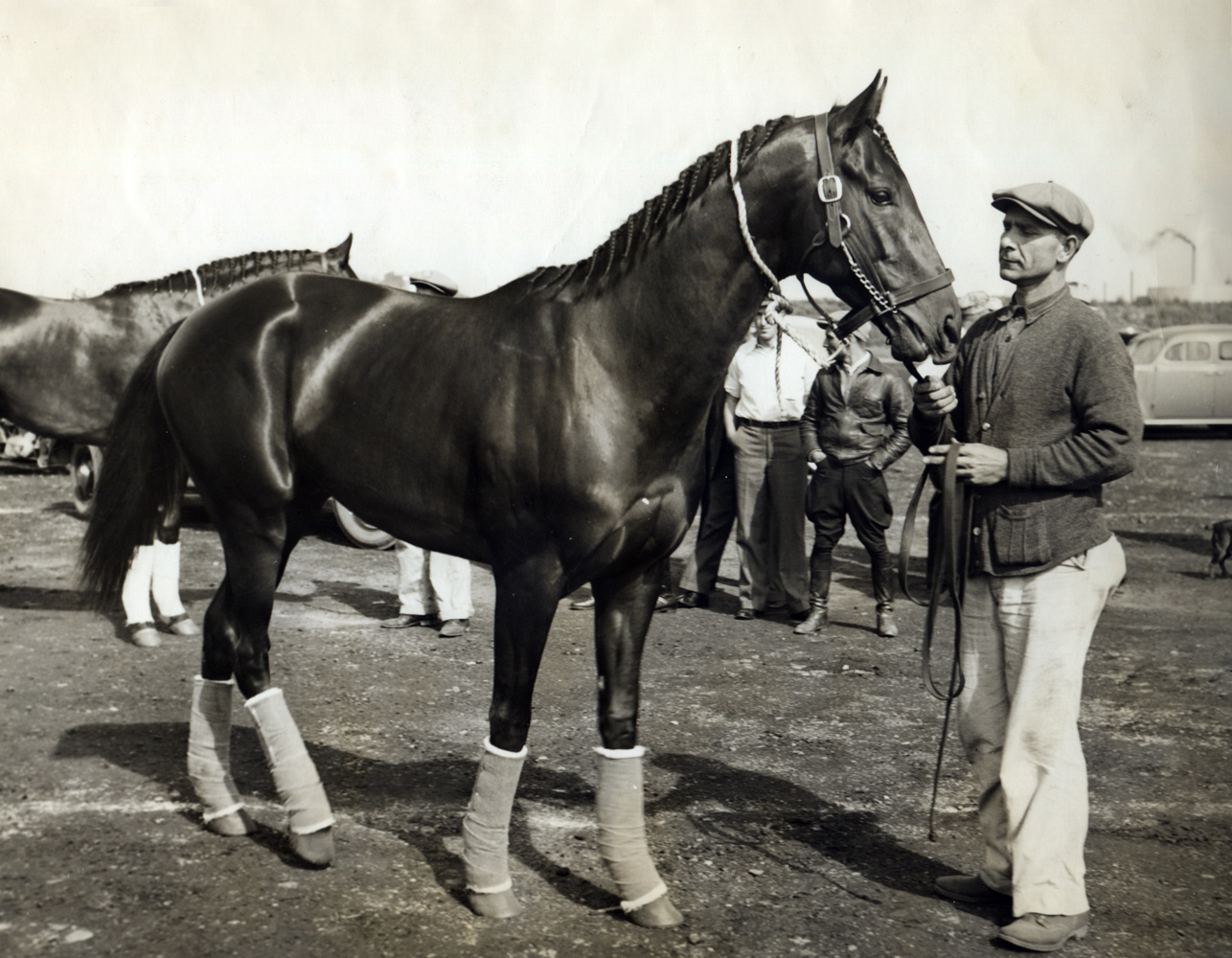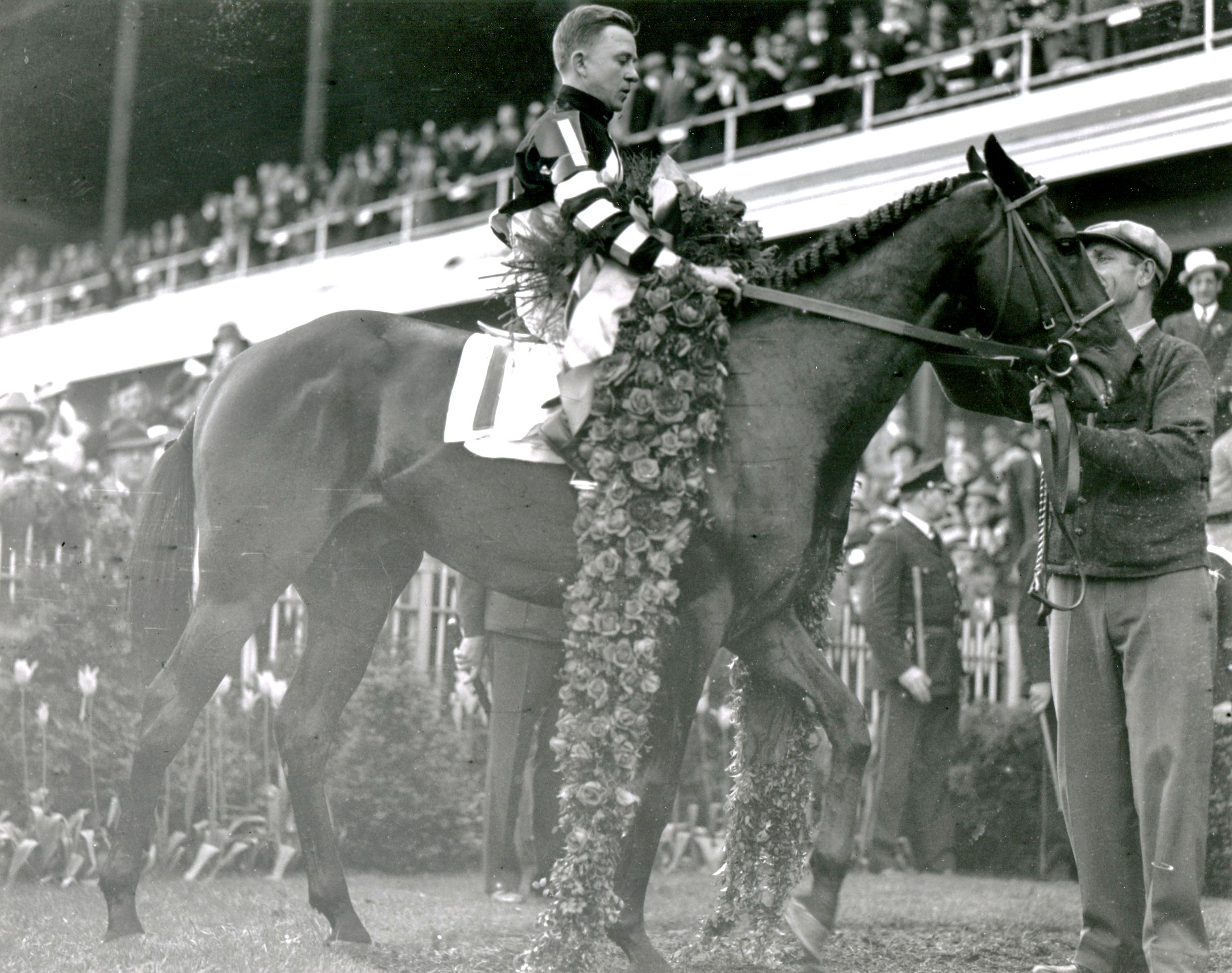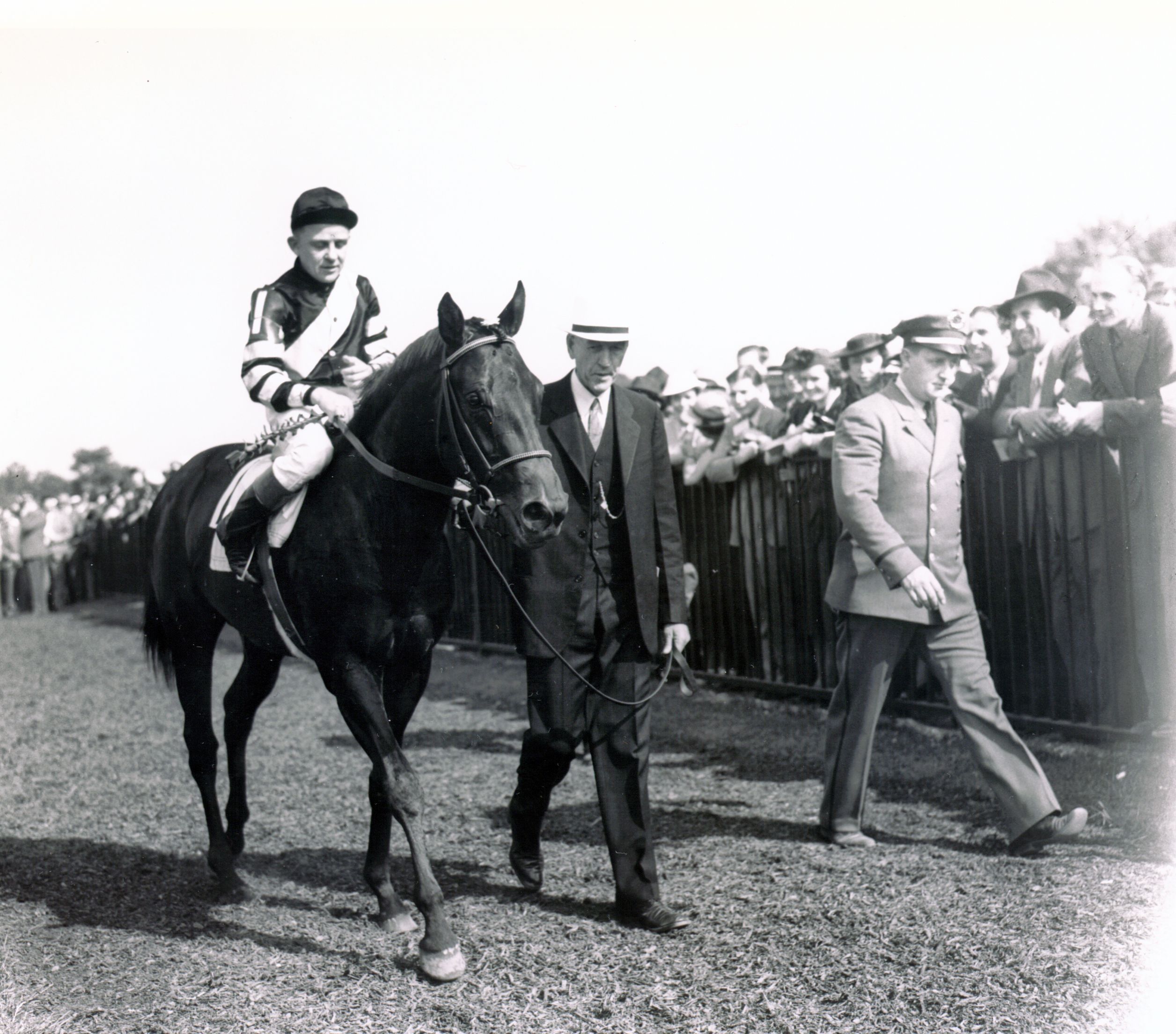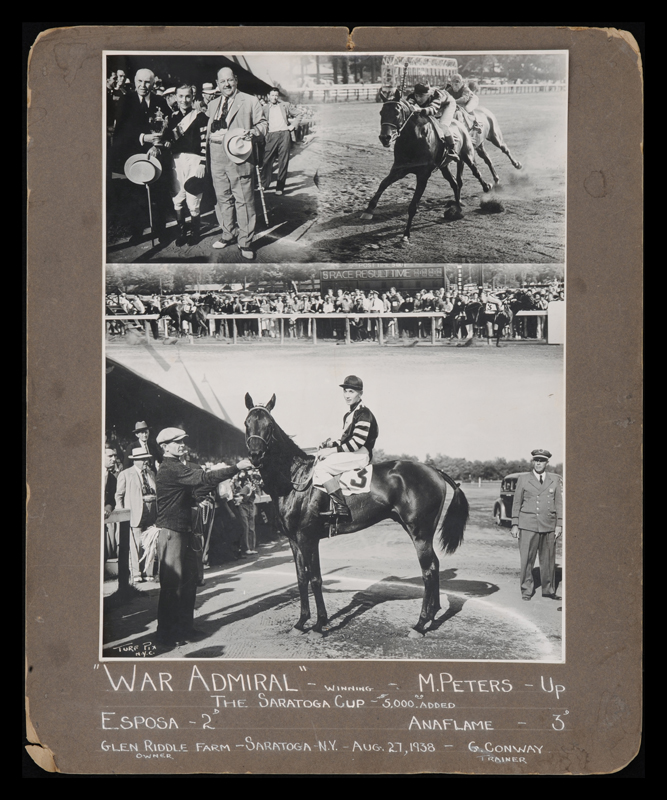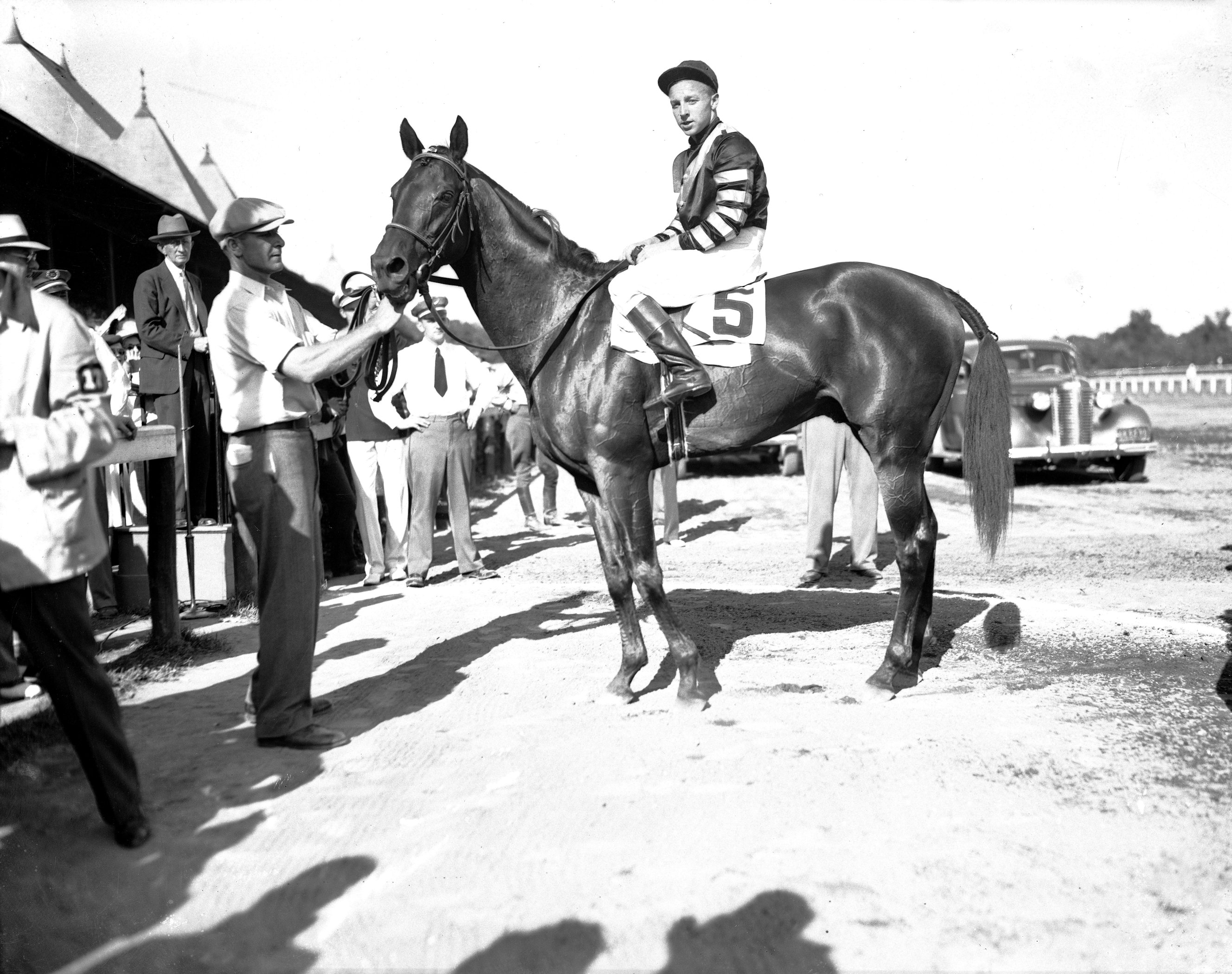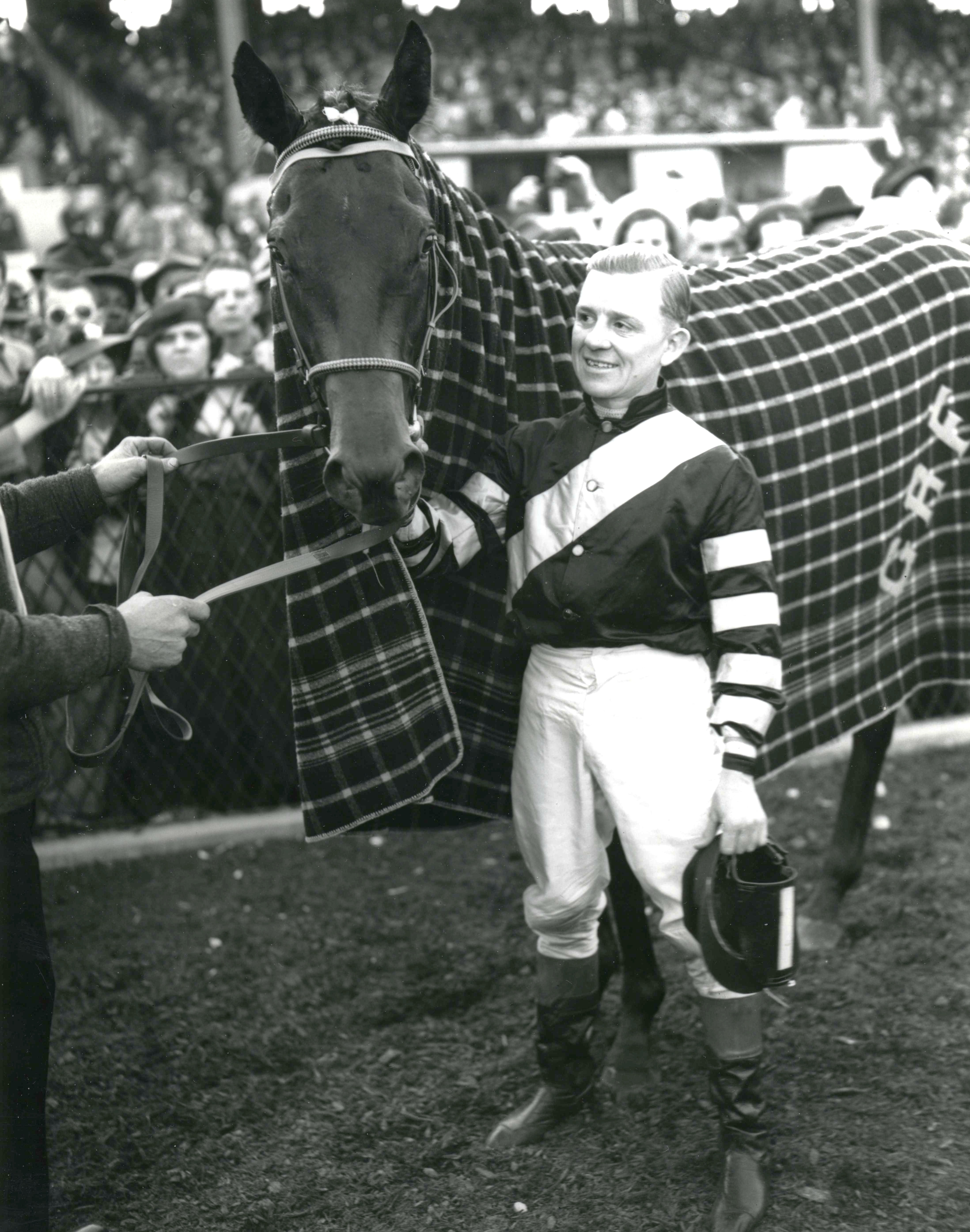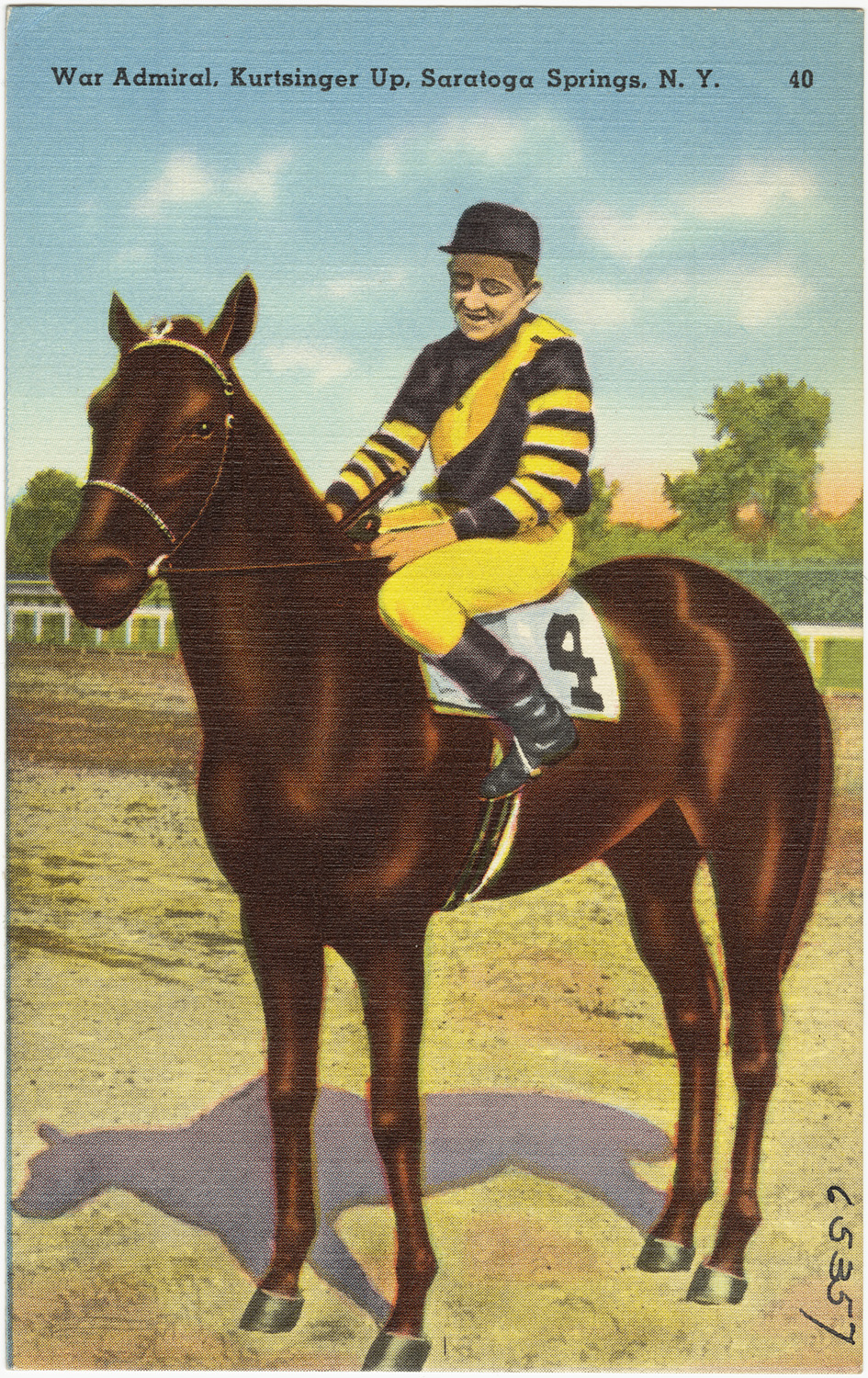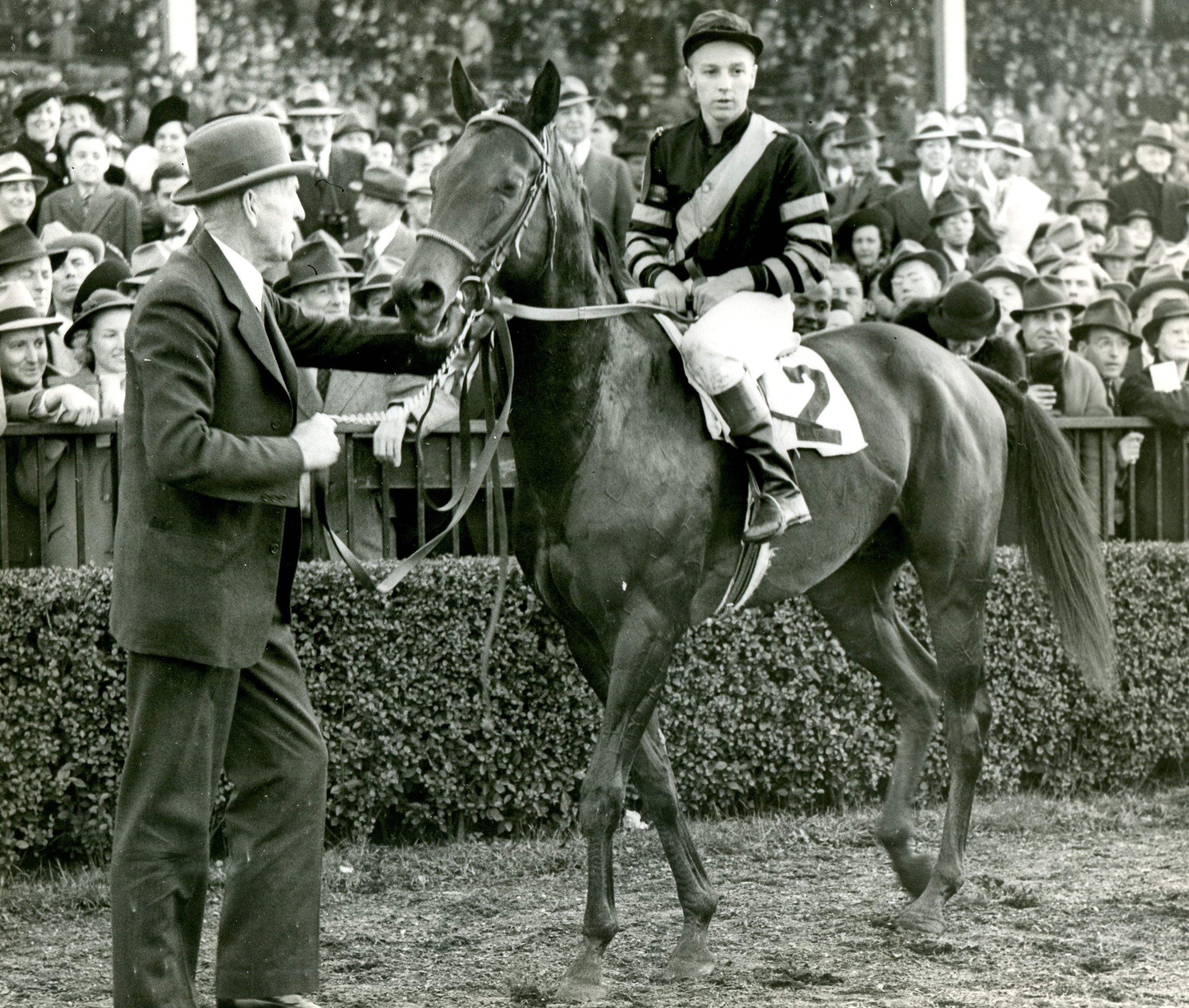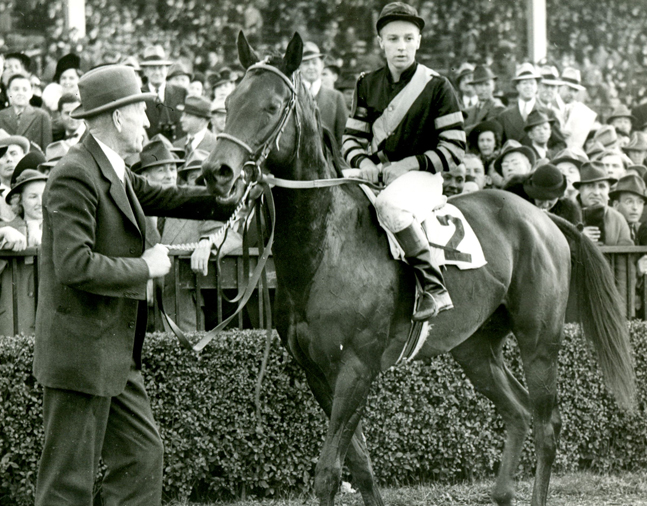War Admiral (KY)
The mighty Man o’ War sired several tremendous racehorses during his distinguished stallion career, but one son stood out from all others — Triple Crown winner War Admiral.
Racing Record
26
Starts
| 1936 | 6 | 3 | 2 | 1 | $14800 $14,800 |
| 1937 | 8 | 8 | 0 | 0 | $166500 $166,500 |
| 1938 | 11 | 9 | 1 | 0 | $90840 $90,840 |
| 1939 | 1 | 1 | 0 | 0 | $1100 $1,100 |
Biography
The mighty Man o’ War sired several tremendous racehorses during his distinguished stallion career, but one son stood out from all others — Triple Crown winner War Admiral.
Foaled at Faraway Farm in Lexington, Kentucky, in 1934, War Admiral was out of the Sweep mare Brushup. Standing a smallish 15.3 hands when he was fully grown, the brown War Admiral was anything but a physical replica of the strapping chestnut Man o’ War. However, what he lacked in size he more than made up for in talent and temperament. In those respects, The Admiral was his sire’s most accomplished creation.
Like his sire, War Admiral was owned by Samuel D. Riddle. He was trained by George Conway and ridden for most of his career by Hall of Fame jockey Charles “The Flying Dutchman” Kurtsinger. Even with his outstanding pedigree and famous connections, War Admiral’s early career was anything but special.
As a 2-year-old, War Admiral compiled a record of 3-2-1 from six starts in 1936. It was a respectable campaign that showed promise, but certainly nothing remarkable. War Admiral won his first two career starts before finishing third to Pompoon in the National Stallion Stakes at Belmont Park. Pompoon was considered to be the star of the 1936 crop of 2-year-olds, while War Admiral had much to prove.
However, when the calendar turned to 1937, War Admiral developed into a spectacular racehorse. After winning his first two starts of the year, The Admiral did the one thing Man o’ War did not — he won the Kentucky Derby.
Back in 1920, Riddle decided there was no need to enter Man o’ War in the Run for the Roses. He believed that running 1¼ miles in early May was too demanding for 3-year-olds that were still not fully developed physically. Man o’ War went on to win the Preakness and Belmont — and all but one of his 21 career starts — but he never had the opportunity to win the Triple Crown because of his owner’s philosophy on the Derby.
It was never known why Riddle changed his mind and allowed War Admiral to run in the Kentucky Derby and get a shot at the Triple Crown. Although it is now known as racing’s Holy Grail, winning the Kentucky Derby, Preakness, and Belmont in War Admiral’s era wasn’t the major goal it is today. Entering the spring races of 1937 only three horses — Sir Barton (1919), Gallant Fox (1930), and Omaha (1935) — had won the Triple Crown.
Although Pompoon was the best of the 2-year-old crop of 1936, War Admiral was sent off as the favorite in the 1937 Kentucky Derby thanks to his impressive wins in his two prep races. The Derby was a walk in the park for War Admiral. Kurtsinger quickly put his mount on the lead and never looked back. The Flying Dutchman kept The Admiral under stern restraint throughout the race and earned a 1¾-length victory over the game but overmatched Pompoon. Thoroughbred racing had a new star.
The Preakness was only a week later at Baltimore’s Pimlico Race Course. Kurtsinger again put War Admiral on the lead, but this time Pompoon dug deep and put up quite a fight. Pimlico is known for its sharp turns, and War Admiral had trouble negotiating them, going wide each time. Jockey Wayne Wright steered Pompoon inside of War Admiral and the two colts dueled in a marvelous stretch run. Kurtsinger, however, sat chilly and never went to the whip. The Admiral won by a head. Pompoon was a quality adversary and had given his all, but once again it was not enough.
War Admiral was always a bit quirky on the track. He acted up in the starting gate at the Preakness and his antics before the Belmont Stakes were legendary. The Admiral delayed the 1937 Belmont for eight minutes, dragging a bewildered assistant starter through the starting gate several times before he was eventually contained. War Admiral stumbled when the gate finally opened for the race and he grabbed a quarter when his hind foot cut an inch-square chunk out of his right forefoot.
The Belmont was shaping up to be a disaster for War Admiral. He had expended a great amount of energy before the race and now his legs and belly were saturated with blood from his misstep out of the gate. War Admiral had every excuse to run a clunker. Instead, he demonstrated why he is considered to be among the greatest racehorses in American history. In a virtuoso performance, War Admiral rocketed to a three-length victory. He covered the 1½-mile distance in 2:28⅗, breaking the track record set by Man o’ War in the Belmont 17 years earlier and equaling the American record for the distance.
America had its fourth Triple Crown winner.
War Admiral sat out the summer races in order to heal up. He returned to the track in October and cruised to victories in three more races, including the Washington Handicap and Pimlico Special. War Admiral was the easy choice for Horse of the Year as he concluded his perfect season undefeated in eight starts.
At 4, War Admiral stretched his win streak to 11 with a victory in the Queens County Handicap. He then was a disappointing fourth in the Massachusetts Handicap. Although the defeat was shocking, it was only a minor hiccup. War Admiral returned to his previous form and romped to successive victories in the Wilson Stakes, Saratoga Handicap, Whitney Stakes, and Jockey Club Gold Cup.
There was tremendous public demand throughout 1938 for a match race between War Admiral and Seabiscuit, the hero of the West Coast. Racing’s two biggest drawing cards finally met in the Pimlico Special on Nov. 1, 1938. The 4-year-old War Admiral was a heavy favorite over the 5-year-old Seabiscuit, the champion handicapper of 1937. A grandson of Man o’ War, Seabiscuit had risen from the claiming ranks to win the hearts of racing fans everywhere. Entering the Pimlico Special, Seabiscuit had won 31 times in 83 career starts. His story was a true fairy tale. The Biscuit lost the first 17 races of his career and raced an astounding 35 times in non-descript events as a 2-year-old. He was never taken seriously until his emergence as a 4-year-old in 1937 when he won 11 of 15 starts.
War Admiral, meanwhile, had won 18 of 22 career starts and had only the setback in the Massachusetts Handicap as a blemish on his record in his 16 starts since the beginning of his 3-year-old season. An estimated 40,000 fans flooded Pimlico Race Course for the event and some 40 million more listened to the national radio broadcast.
It was Seabiscuit’s day. The Biscuit broke alertly from the walkup start and settled nicely under Hall of Fame rider George “The Iceman” Woolf. Kurtsinger eventually brought War Admiral alongside Seabiscuit at the half-mile pole and even briefly took the lead, but Seabiscuit pulled away to win by four lengths in track-record time.
War Admiral bounced back to win the Rhode Island Handicap only 11 days after his loss to Seabiscuit. The Admiral returned to win his only race at age 5 in 1939 before he was retired to Riddle’s farm in Kentucky because of an ankle injury. War Admiral concluded his career with a record of 21-3-1 from 26 starts and earnings of $273,240.
As a stallion, War Admiral sired 40 stakes winners, including Hall of Fame member Busher, the 1945 Horse of the Year. The Admiral was the leading sire of 1945 and ranked among the top 20 sires 11 times. He died in 1959 at age 25. War Admiral was buried next to Man o’ War and Brushup at Faraway Farm. The graves were eventually moved to the Kentucky Horse Park, where they remain today.
Achievements
Horse of the Year — 1937
Champion 3-Year-Old Colt — 1937
Triple Crown Highlights
Won the Kentucky Derby — 1937
Won the Preakness Stakes — 1937
Won the Belmont Stakes — 1937
Media
